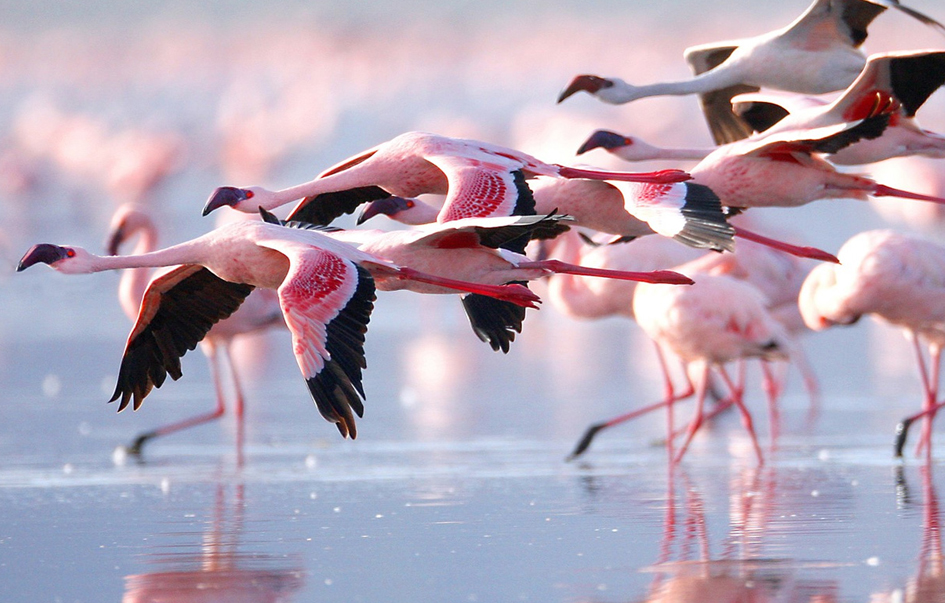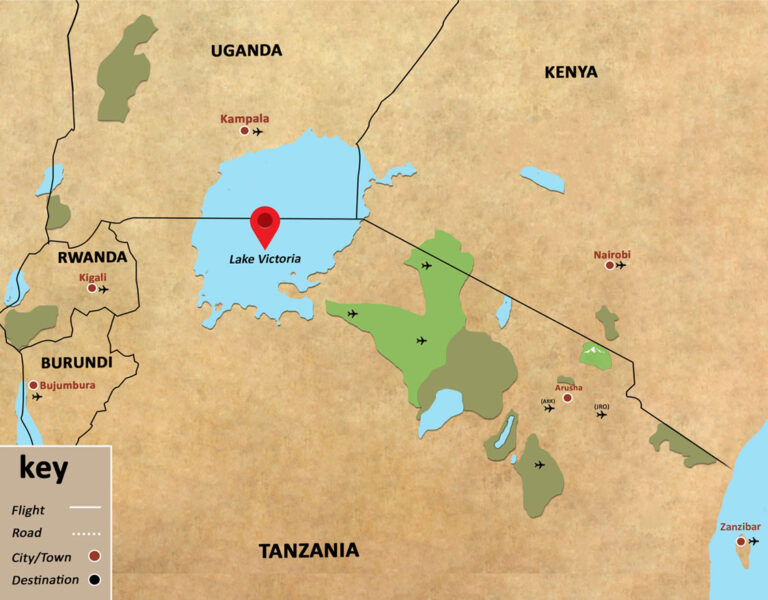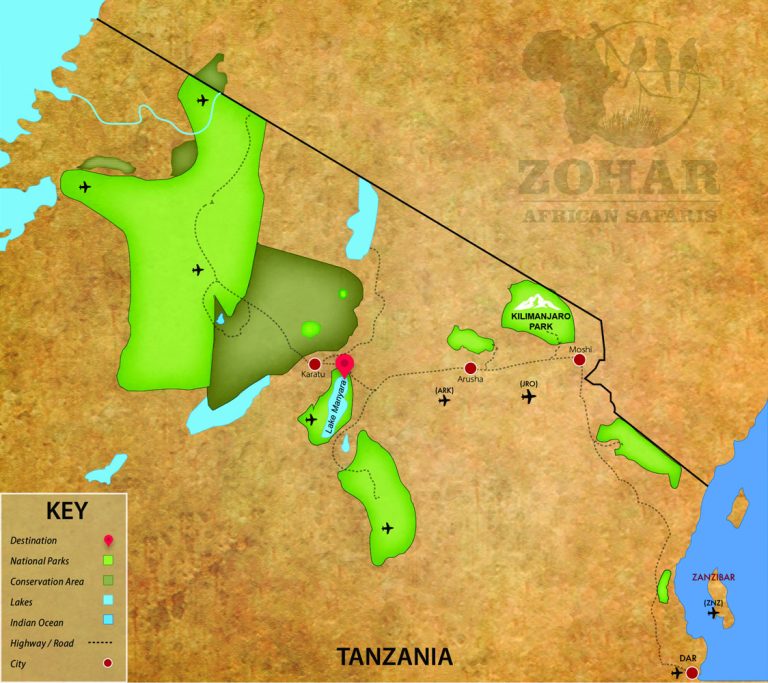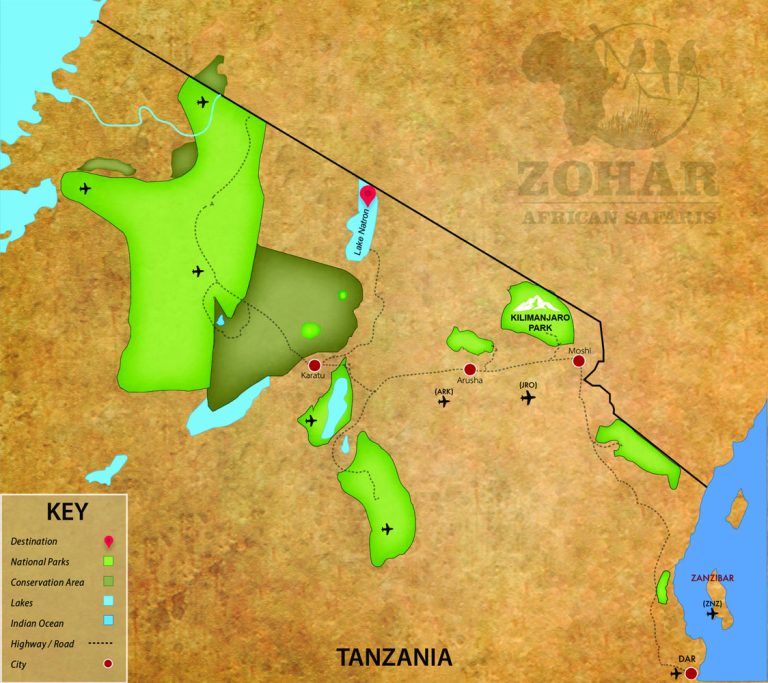Tanzania’s lakes: where nature, culture, and wildlife meet

Tanzania is home to a wealth of lakes, some of which are among the most striking and expansive in the entire African continent.
Lake Victoria, Lake Tanganyika, and Lake Malawi, for example, are not only major scenic and tourist destinations, but also vital habitats for many different species, contributing to the country’s extraordinary biodiversity.
Each lake offers unforgettable experiences, including photo and wildlife safaris, boat excursions, bird watching and flamingo spotting, as well as traditional and nighttime fishing.
Visitors can also connect with local communities through cultural experiences, such as visits to rock art sites, and discover the region’s unique geological features.
This blog takes you on a brief but meaningful journey across Tanzania’s most beautiful lakes, revealing their shimmering light, vibrant colors, rich wildlife, and lush vegetation.
Lake Victoria
Lake Victoria is the largest lake on the African continent and the second largest in the world, after Lake Superior, which is in North America. Although it spans Uganda, Kenya, and Tanzania, about 49% of its surface area lies within Tanzania.
It is considered the source of the White Nile, which, together with the Blue Nile, forms the Nile River. Lake Victoria plays a vital socio-economic role: it is a primary source of fish, a key water supply, and an important route for inland transportation.
Situated in Lake Victoria, not far from Mwanza, Ukerewe Island is Africa’s largest lake island and ranks among the world’s five largest.
It can be described as a genuine and authentic travel destination, still untouched by mass tourism. More importantly, it stands as a place of acceptance and inclusion: thanks to the deep sense of hospitality, Ukerewe has become a meaningful refuge for people with albinism, offering safety and dignity in contrast to the discrimination and violence they may face elsewhere.
In Tanzania, albinism has long been a source of persecution and mistreatment, often rooted in widespread ignorance and harmful superstitions.
The nearby city of Mwanza serves as a vibrant gateway to Lake Victoria, offering access to local markets, cultural sites, and transport to the surrounding islands.
The lake is also known for its remarkable biodiversity, including hundreds of fish species (many of them endemic) and a wide variety of birdlife that attracts nature lovers and birdwatchers alike.
Lake Victoria offers unforgettable experiences, from boat trips and postcard-worthy sunsets to traditional fishing excursions and genuine encounters with local communities. The area is often included in custom safaris in northern Tanzania, serving as a relaxing and cultural extension after visits to the wildlife reserves.
For example, Zohar Safaris offers itineraries such as “Wildlife, culture & Zanzibar – 14 days” which feature Lake Victoria among the destinations, combining nature, heritage, and authentic encounters with local communities.

Lake Manyara
Located in northern Tanzania, Lake Manyara lies within the Lake Manyara National Park. This picturesque setting, combined with its rich birdlife (including flamingos, pelicans, storks, and bee-eaters), frames unforgettable adventures.
The lake is saline and very shallow, fed by mountain streams and rainfall, with its surface area fluctuating depending on the seasons.
Famous for its flamingos, the area is also home to hippos, elephants, baboons, zebras, buffaloes, and giraffes. One of the park’s most unique features is its population of tree-climbing lions, a rare and fascinating sight.
Surrounding the lake are Maasai villages, home to one of the most distinctive ethnic groups on the African continent, renowned for their rich culture, long-standing traditions, and ceremonial dances.
Among the most immersive and appreciated experiences are visits to Maasai villages, where travelers can take part in genuine moments of daily life. Building huts, gathering firewood, and creating traditional crafts are just some of the hands-on, authentic activities on offer.
In this context, Zohar provides an “Authentic Maasai cultural experience,” which includes practical activities within the village of Mto Wa Mbu, a place where local traditions blend seamlessly with rural tourism.
Lake Manyara is also featured in multiple Zohar Safaris itineraries, including “The best of Northern Tanzania – 7 days”, which combines major parks such as Serengeti, Tarangire, Ngorongoro, and Lake Manyara. You can also enjoy dedicated day experiences like biking, canoeing, or ziplining ideal for nature lovers and active travelers.

Lake Natron
Lake Natron lies on the border with Kenya, at the foot of the still-active Ol Doinyo Lengai volcano, the sacred mountain of the Maasai.
This highly saline and alkaline lake maintains a pH between 9 and 10.5, with surface temperatures that can rise above 104°F (40°C).
Lake Natron is known for a striking natural phenomenon: the calcified remains of small animals, such as birds or bats, that come into contact with its caustic waters and become eerily preserved.
The lake’s harsh chemical environment coats the bodies in a layer of mineral salts, creating an almost fossilized appearance.
Despite its extreme conditions, Lake Natron is a vital breeding ground for lesser flamingos, which feed on the special algae that thrive in its alkaline waters. Their presence turns the landscape a brilliant pink during the nesting season. The lake’s dramatic, moon-like scenery creates a surreal atmosphere, ideal for bold travelers seeking a raw and unforgettable adventure.
Lake Natron is featured in several Zohar Safaris itineraries, often combined with cultural visits, wildlife viewing, and sunrise experiences over the flats. Adventurous travelers can enjoy dedicated activities like the Lake Natron waterfalls hike, a guided trek through stunning gorges that leads to a refreshing waterfall, an unexpected natural gem in the arid landscape.

Lake Tanganyika
Lake Tanganyika lies along the border between Tanzania and the Democratic Republic of the Congo, also touching Burundi and Zambia. It is one of the African Great Lakes, the second-deepest lake in the world (reaching depths of up to 4,823 feet) and among the largest by surface area (12,700 square miles).
Known for its incredible variety of fish, it is a top destination for both traditional and sport fishing enthusiasts. The lake is a perfect setting for unforgettable boat excursions, snorkeling, and diving, all made even more remarkable by its clear waters, one of Lake Tanganyika’s most iconic features.
In the past, the lake served as a major crossroads for trade routes in Central Africa, having a long history of tribal and colonial settlements. The Tanzanian shore of the lake provides access to two important national parks.
- Gombe Stream National Park is renowned for the chimpanzee research conducted by Jane Goodall.
- Mahale Mountains National Park, accessible only by boat, offers a unique combination of forest trekking and primate sightings along the lake’s shores.
Lake Tanganyika offers a secluded, untamed atmosphere, far from the bustle of mass tourism, a perfect escape for those seeking a deep connection with untouched nature.
It is often associated with Gombe Stream National Park, which offers access to the western Tanzanian shores. You can explore the area through the dedicated page, which includes a map and useful context for planning your visit to Lake Tanganyika.
Lake Nyasa
Internationally known as Lake Malawi, it stretches across Tanzania, Mozambique, and Malawi. It is the third-largest lake in Africa and the ninth-largest in the world. Home to the greatest freshwater biodiversity on the planet, it hosts over 1,000 species of cichlids, many of which are endemic.
This remarkable feature makes it a sought-after destination for diving and snorkeling enthusiasts. The Tanzanian side of the lake sees less mass tourism, offering more intimate and authentic experiences.
A great choice for boat trips, fishing, and excursions, it provides a perfect opportunity to connect with local culture in an authentic setting.
Lake Nyasa can be included in tailor-made Zohar Safaris itineraries, offering lakeside experiences along the Tanzanian shore and excursions near Kitulo National Park. For example, travelers can enjoy boat trips or hikes around Matema Beach, located on the shore of Lake Nyasa near the park.
Lake Eyasi
Located in a remote area southwest of the Ngorongoro Crater in northern Tanzania, Lake Eyasi is a seasonal salt lake that can nearly dry up during the dry season.
The area is home to two indigenous peoples, the Hadzabe and the Datoga.
Excursions and visits to the villages offer authentic experiences, including bow hunting, gathering wild plants, and observing daily rituals.
In the Mangola area, visitors can explore ancient rock art sites featuring engravings and paintings attributed to prehistoric peoples. These remarkable testimonies of immense anthropological value depict animals, humans, and scenes of daily life.
Experience Tanzania’s lakes: landscapes, culture, and unforgettable moments
Through its breathtaking lakes, Tanzania tells stories woven around people, nature, and ancient traditions. Visiting these places means enjoying stunning landscapes and immersing yourself in local culture.
You can experience it firsthand through meaningful activities like guided walks, canoe excursions, or visits to nearby villages.
Adding a lake to your itinerary enriches your journey with an unforgettable experience that leaves a lasting impression on every traveler’s heart.
Discover our tailor-made safaris and let us guide you through the most captivating lakes of Tanzania.
Contact us to start planning your personalized adventure.
